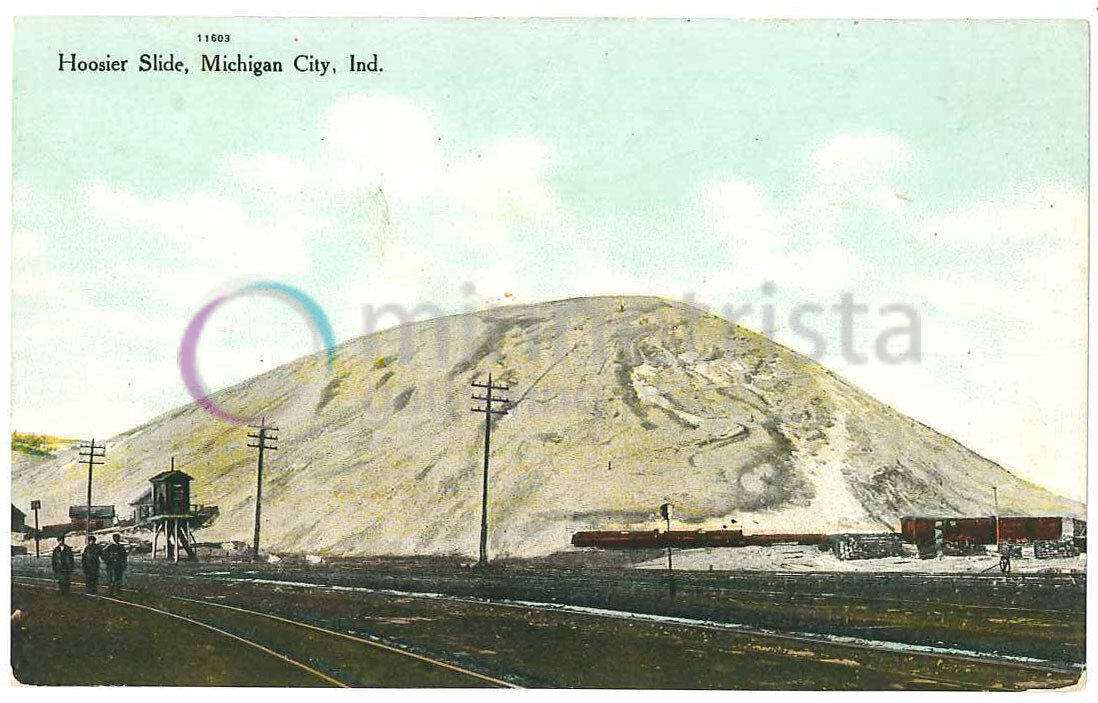Ball Blue and the Hoosier Slide
They’re everywhere – in grandma’s basement, at flea markets and rummage sales, and in the Minnetrista Heritage Collection. They are used to hold pencils and pens, as centerpieces at wedding receptions, and as decoration in many kitchens. They are the beautiful blue jars, which Ball Brothers in Muncie produced. In approximately twenty years, Ball made millions of Perfect Mason and Ideal jars, some in clear, but most in blue.
A recent trip to Michigan City, Indiana and a question from Minnetrista’s front desk staff reminded me that I haven’t shared information about the source of the Ball blue color. Sand is the major component of glass, and impurities in the sand determine the color of glass. Each deposit of sand has a unique composition, and the color of glass varies from lime green to yellow-green to aquamarine to teal to sky blue to blue. To get clear glass, a decolorizer is added to the mixture. The Ball Blue color comes from sand taken from the Hoosier Slide sand dune on the shore of Lake Michigan in Michigan City, Indiana.
By the late 1800s, the 200-foot high Hoosier Slide was one of Indiana’s most famous landmarks. It was a tourist attraction, bringing excursion crowds by boat and train from surrounding towns. Picnicking at the top and then sliding down the dune (hence the name) were popular activities. Getting married at the summit was also common.
When it was found that the sand was suitable for making glass, mining of the dune began. Railroad cars were filled and sand was shipped as far away as Mexico. Among the biggest consumers of the sand were Ball Brothers in Muncie and Pittsburgh Plate Glass Company of Kokomo. The sand was also used as landfill for Jackson Park in Chicago and the right-of-way for the Illinois Central Railroad. The work was done manually, shoveling sand by hand into wheelbarrows and loading it into railroad cars. It took less than thirty years to ship out 13.5 million tons of sand, effectively leveling the dune. After the sand ran out, Ball made only clear jars.
The site of the former dune was purchased by Northern Indiana Public Service Company (NIPSCO) and a coal-fired generating plant was built on the land. In September 2018, NIPSCO announced that it planned to stop burning coal to produce electricity. Coal will be replaced with renewable resources such as wind and solar power. The plant is scheduled to close by 2028. Michigan City officials are already talking about future use of the land. The dune won’t return but an unobstructed view of the shoreline and Lake Michigan might.



